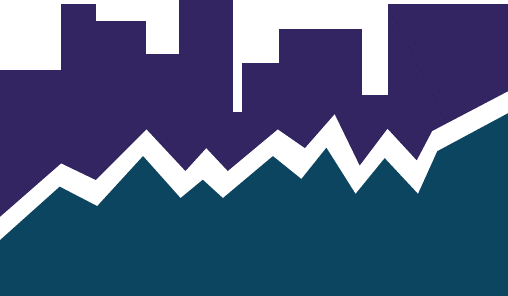The Monday Morning Quarterback
A quick analysis of important economic data released over the last week
By Elliot D. Pollack & Co
Recession. That is the topic floating around Wall Street. Goldman Sachs, the investment banker, puts the odds of a U.S. recession at a 38% probability within the next 24 months. Part of the concern is the inverted yields on the two-year and ten-year Treasuries, typically a sign that investors have deep concerns about the strength of the economy in the years to come. Eight of the past nine recessions have been preceded by an inversion of the yield curve.
The inverted yield curve is one more issue to spook investors on top of the Ukraine war, new COVID lockdowns in Shanghai and other places, and continued supply chain tangles. Last Thursday, the yield on the two-year Treasury was at 2.337% while the yield on the 10-year Treasury fell to 2.331%, turning the spread negative.
In a normal market, yields for shorter term bonds are lower than those for longer maturities because investors tie up their money for a longer time and want a reward for doing so. There is also less predictability of where the economy might head in the distant future. When an inversion occurs, investors believe short term conditions are better than those further out. The relationship between two-year and ten-year Treasuries is most closely watched.
Part of the reason for the current inverted yield curve is because the market has priced the expected rate hikes by the Fed into yield rates. Yields on all bonds have risen in response, but long term yields have not risen as much as the short term rates. The Fed’s bond buying, quantitative easing program also helped to hold down long term rates.
The inverted yield curve should not cause panic, but it is a red flag. Combined with a period of high inflation, however, it could push the stock market into bear territory. Whether a recession occurs in the next year or two will depend upon the Fed’s efforts to get inflation under control as well as a resolution to the Ukraine war.
U.S. Snapshot:
- Employment gains were strong in March. In total, the economy added 431,000 jobs in the month, adding to the 1.3 million total in January and February. Since the start of the recovery, the U.S. has added 20.4 million jobs, or 92.8% of the jobs lost during the pandemic.
- The majority of monthly gains were in Leisure & Hospitality and Professional & Business Services with 112,000 and 102,000, respectively. No sector lost jobs during March. Since the start of the expansion, six out of the eleven super sectors have recovered all of their lost jobs. Leisure & Hospitality lost the most jobs, 8.2 million, and has recovered 6.7 million so far.
- There were nearly 11.3 million job openings in February, according to the latest data from the Bureau of Labor Statistics. The number of hires (6.7 million) outpaced the number of separations (6.1 million). The number of quits was the highest contributor to separations with 4.4 million, with only 1.4 million being layoffs.
- Personal income increased 0.5% in February, up 6.0% from a year ago. Disposable income was up 0.4% and personal consumption expenditures were up 0.2% from January. The personal savings rate was up 6.3%.
- After two consecutive months of declines, the Consumer Confidence Index had a slight increase in March. The confidence level reached 107.2 and was up 1.4% for the month, but down 6.7% from a year ago. Strong employment outweighed concerns regarding inflation and the Ukraine conflict.
- ISM’s Manufacturing PMI declined to 57.1% in March. Last month’s level was the lowest reading since September 2020. While there was a decline, the index still signals growth in manufacturing.
Arizona Snapshot:
- Passenger traffic at Sky Harbor has continued recovering from the 2021 level and reached 3.3 million in February. Total traffic is still down compared to a pre-pandemic February 2019 level of 3.6 million.
- Lodging occupancy reached 72% across Arizona, up 30.1% from a year ago. Demand was up 33.1% while supply increased 2.3%.
- The price relief many were hoping for in 2022 has not arrived in the data housing data. Greater Phoenix, at a 32.6% increase, led all metros tracked by the S&P/Case-Shiller Home Price Index for the 32nd consecutive month. Tampa with 30.8% and Miami with 28.1% were the closest in terms of growth rates to Greater Phoenix. The 20-city average increase was 19.1% growth.









